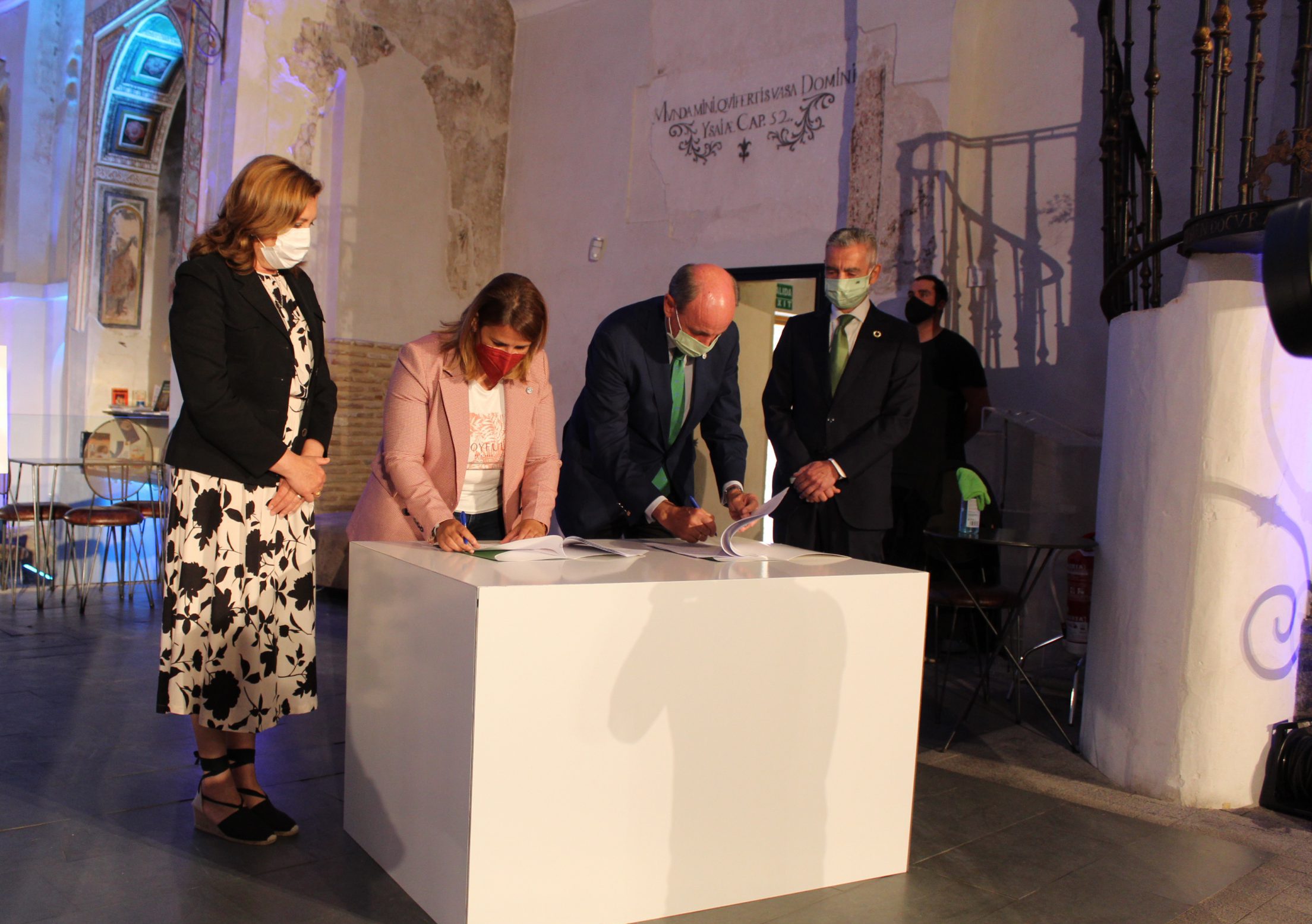Fundación Iberdrola España and the City Council of Talavera de la Reina sign an agreement to illuminate the Puente Viejo (Old Bridge)
- The project, which is part of Iberdrola’s Illuminations Program, will involve an investment of around 80,000 euros.
- The new lighting will use LED technology and will accentuate the beauty of the architectural elements through a design adapted to the heritage values of the bridge.
Iberdrola, through its foundation, has signed a collaboration agreement with the City Council of Talavera de la Reina to develop an ornamental lighting project for the Old Bridge. The replacement and renovation of the lighting of the Old Bridge is another example of Iberdrola’s commitment to Castilla-La Mancha, the conservation of the historical and artistic heritage of the region and the promotion of the social value of culture.
The mayoress of Talavera de la Reina, Tita García, and the director of Fundación Iberdrola España, Ramón Castresana, signed the agreement in a ceremony which was also attended by the president of Fundación Iberdrola España, Fernando García Sánchez; the Councilor for Education, Culture and Sports, Rosa Ana Rodríguez Pérez; the councilor for heritage, Sergio de la Llave; and the institutional delegate of Iberdrola in Castilla-La Mancha, Venancio Rubio.
The initiative, which is part of Iberdrola’s Illuminations Program, will involve an investment of around 80,000 euros to provide the monument with new lighting that will use LED technology and will accentuate the beauty of the architectural elements through a design adapted to the bridge’s heritage values.
The project aims to highlight the unique elements that make up the Old Bridge, its integration into the landscape and its relationship with the urban center of the city. The new lighting will enhance the bridge as another part of the Tagus River as it passes through the city; with a careful design of lights and shadows that will highlight the volumes of its structures and the particular changes in the layout of the monument.
The Old Bridge of Talavera
It is the oldest bridge that Talavera currently has over the Tajo River. With a first Roman origin, the great construction is undertaken towards the end of the XV century under the direction of Fray Pedro de los Molinos, maintaining, more or less, the same aspect that at the present time. In this way the bridge has been in permanent reconstruction. The last restoration took place in 2002.
The most primitive part, of Roman origin, is below the water level, and corresponds to the foundations of the first section. This ancient bridge continued in a straight line to the island located in front of the city shore. Around the 13th century, the layout must have been altered with this characteristic break, and a few arches with buttressed arches were erected.
Fundación Iberdrola with culture
Fundación Iberdrola España carries out interventions in artistic monuments and unique buildings to install or improve indoor and/or outdoor lighting in order to contribute to the enhancement of historical and artistic heritage and improve the energy efficiency of these systems.
An example of this type of action is Iluminando el Prado/Lighting the Prado, the integral lighting project of the Prado Museum with LED technology, which was a pioneering initiative and a benchmark in Europe when it was launched. The ornamental lighting of the Basilica of Nuestra Señora del Prado in Talavera is another example of the company’s support for innovative projects in this area.
Since 2010, Fundación Iberdrola España has also been carrying out an ambitious project for the restoration and maintenance of Romanesque art monuments in Spain and Portugal, the Atlantic Romanesque Plan, a cross-border cooperation project developed together with the Portuguese Secretary of State for Culture and the Regional Government of Castilla y León, whose second phase is progressing at a good pace, promoting the sustainable socio-economic growth of the territory, based on its own resources: the people who live there, its natural environment and its cultural heritage.


